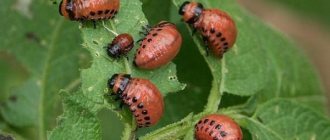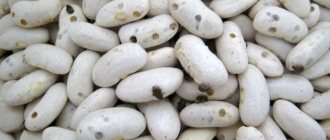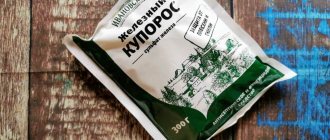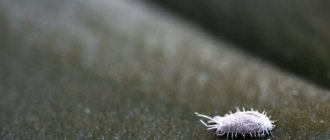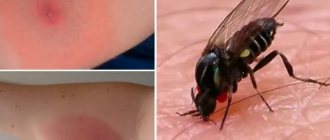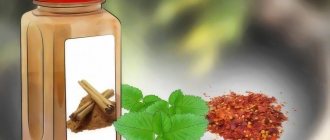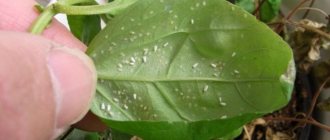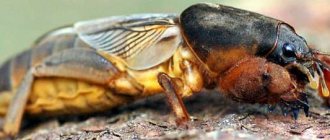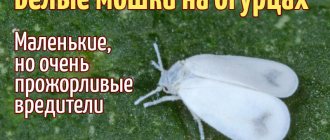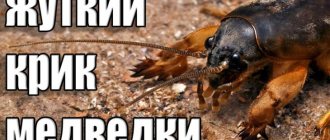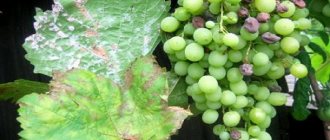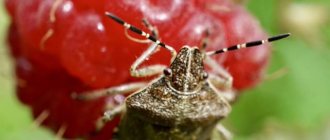Tomato beds often attract pests. The most dangerous of them is considered to be the whitefly - it sucks the juice of the plant, which leads to its drying out and death. Both adult moths and larvae are pests.
What to do if there are white midges on tomatoes, how to deal with them, and what measures can be taken to protect the crop from pests - you will learn all this from our article.
Why white midge appears on tomatoes and how to get rid of it
Whiteflies often attack tomatoes grown in greenhouses or greenhouses. Insects appear when it rains frequently. The moth looks like an ordinary midge, only white. The pest most often appears in mid-summer under favorable conditions - high humidity and high air temperatures.
A gardener may not immediately recognize that pests have appeared on his site - whiteflies choose to live on the lower leaves of a plant or hide on their insides.
You can save the entire crop from white midges if there are only moths on the plants without larvae. The fight against small pests needs to be approached comprehensively.
The most common ways are:
- fumigation;
- chemical treatment;
- biological drugs;
- bait.
Signs of infection
It is easy to recognize plant damage by the following external signs:
- yellowing and curling of leaves;
- uneven ripening of fruits;
- discoloration of the internal tissues of tomatoes;
- formation of plaque on the upper leaves;
- presence of insects on the inside of the leaf;
- when you touch the plant, a cloud of midges rises.
What kind of pests could these be?
Many insects can parasitize nightshades. There are two types of midges living on tomatoes: some pests are black in color and are constantly on the move, not inhabiting the plant. Other midges are white and settle on the leaves of seedlings.
The most dangerous pest is the greenhouse whitefly. Her body size is 3 mm. The insect prefers to inhabit the inside of the lower leaves of seedlings, where it lays eggs.
Whiteflies carry viral diseases - leaf curl, chlorosis and jaundice. If measures are not taken in time, this may affect the growth, flowering of the plant, its leaves and fruits.
The moths themselves are not so dangerous - they can be easily eliminated using folk or chemical means. However, it is not so easy to deal with insect larvae - they have protection in the form of a special coating, which reduces the effectiveness of the drugs. In addition, if you use the same products, insects can develop immunity to them.
What harm can they do?
White midges are the most dangerous pests of nightshades. Despite their small size, the damage they cause can be colossal. As soon as midges or their larvae attach to the plant, they begin to consume its sap. Because of this, the seedlings begin to experience a lack of nutrients, which affects their fruits. As a result, the green mass of the plant dries out and falls off, and the fruits wrinkle.
The vital activity of small midges leads to the formation of plaque on the top of the leaf, which can cause it to curl. At first it has a transparent color, which later turns black, indicating the formation of sooty fungi. Parasites appear from insect secretions. They cover the plant stem and fruits.
Black midge
In addition to whiteflies, other insects can also parasitize greenery, so you should be wary of the appearance of uninvited dark-colored “guests” in the leaves of plants. The black midge that appears on tomatoes, just like the white-winged midge, feeds on the juice of the stems and leaves, actively destroying the plant.
Signs of presence on tomatoes
If black pests begin to multiply on tomatoes, you can notice the following changes that have occurred in the plants:
- leaves look lifeless and dry, despite regular watering;
- stunted appearance of stems;
- poor yield or complete loss of the diseased plant’s ability to bear fruit;
- the appearance of ant trails that protect black midges, feeding on their waste products.
Very often insects can be seen with the naked eye, especially on a sunny day - they like to sit on the bottom of leaves and eat succulent areas.
To stop the “feast” of parasites and protect your plants, you will need to treat them and fight insects as soon as possible.
Types of insect control
It is important to note that not all control methods are effective at all stages of insect development. The plaque that forms on the leaves as a result of the vital activity of midges is a barrier against chemical and biological agents. Therefore, to quickly destroy pests, you need to use an integrated approach.
Chemical control methods
Manufacturers annually produce a large number of drugs against pests. Before purchasing the product, you need to study the instructions in order to properly treat the plant. Some drugs only need to be sprayed once, others need to be used regularly.
It is important to choose a drug suitable for a certain stage of insect development. So, moth repellents will not help get rid of larvae and pupae. Spraying is ineffective in controlling adults; they can fly from plant to plant.
Types of chemicals against whiteflies:
- systemic insecticides - the drug penetrates the plant sap and poisons insects;
- contact insecticides - act when the pest comes into direct contact with the treated plant.
Important! Systemic drugs should not be used during the harvest period. The last treatment should be no later than 25-30 days before harvesting the fruits.
The most effective drugs against white midges are:
- "Pegasus";
- "Fufanon";
- "Confidor Extra";
- "Aktara";
- "Mospilan";
- "Decis-pro";
- "Phosbecide";
- "Aktellik".
Processing rules
So:
- The procedure is carried out on a warm, windless day.
- Chemicals are applied using a spray bottle.
- After treatment, you need to bring the plants into the shade or place a canopy over them to avoid burns.
- Alternate medications regularly.
- Use a product suitable for the specific stage of insect development.
Important! Do not immediately use strong chemicals; toxic compounds can accumulate in the soil and poison the plants.
Biological drugs
The essence of biological agents is the use of living microorganisms that can resist the action of pests. In the case of whiteflies, manufacturers produce preparations with insects that can eat white midge larvae.
A cardboard with a biological product is hung on tomato bushes. After some time, microorganisms begin to spread throughout the plant, destroying whitefly larvae and pupae.
Fitoverm is considered the most effective biological preparation; after its use, you can harvest within two days. The product contains compounds that quickly decompose in the soil; they do not harm the plant.
Traditional proven methods
Experienced summer residents note that folk remedies can effectively combat pests without developing resistance in them.
These methods include:
- Cold. Moths do not like low temperatures, so you need to take the seedlings out into the fresh air from time to time. The method is suitable only for cold-resistant varieties; the pest will die only when the temperature drops to +10C.
- Insect traps. Glue baits, which can be made at home, are especially effective - a sheet of plywood is painted yellow and generously smeared with glue, Vaseline, oil or honey. The bait is placed near the affected plants. You can also hang regular adhesive fly tape.
- Infusion of yarrow. Pour 1 kg of plant leaves into a bucket of water and leave for two days in a warm place. Then the infusion is filtered. It is used for spraying. The procedure is carried out 2-3 times with an interval of 7 days.
- Dandelion decoction - pour 1 kg of fresh flowers into 1 bucket of water, add 1 tbsp. washing powder. The mixture is infused for a day, then filtered. Suitable for processing bushes and soil.
- Soap products - used when there are large numbers of insects, as well as in cases where the use of chemicals is undesirable. To treat the leaves, you can use laundry soap - grind 1 bar and dilute it in water in a ratio of 1:6. Before applying to the leaves, you need to whip up the foam; you can also spray the bushes with the solution. The product does not require rinsing.
- Garlic infusion - chop 10 cloves and add 5 liters of water, leave to infuse overnight in a warm place. Before use, the infusion must be filtered.
- Water - used to wipe the leaves. Effective in the fight against adult insects.
Fumigation of greenhouses
The procedure should be carried out twice a year - before planting seedlings and after harvesting. Before fumigation, you need to close the windows and doors, and also plug all the cracks.
Sulfur candles can be used for fumigation, but they are only suitable if the room is located away from residential buildings. Before carrying out the procedure, you need to remove all tomatoes from the greenhouse.
You can use smoke bombs with insecticides in those greenhouses that are located near your home. In this case, you can leave the seedlings in the greenhouse. The product will help kill not only adults, but also larvae, and will also protect against various diseases.
The smoke control method can be carried out using tobacco. You need to put a sheet of iron on the ground, on top of which you place newspaper, wood chips and tobacco. Before the procedure, you need to lubricate the glass of the greenhouse with Vaseline. After the fire is lit, the disturbed insects will rush to the windows and stick to them.
What herbs will save tomatoes?
By sowing the right herbs in an area with tomato beds, you can forget about pests forever. These herbs include dill - it attracts insects that feed on midges. It can be planted between the beds.
Experienced summer residents often plant tobacco along the perimeter of the site. Although this plant will not repel whiteflies, it will bear the brunt of the attack. Most of the insects will begin to settle in the tobacco bushes, which will give the vegetable grower time to begin pest control.
Mechanical methods
The fight against whiteflies in a greenhouse is also carried out using light and natural enemies of midges. You can also catch adults using a vacuum cleaner.
Whiteflies, like other moths, are attracted to light. One person enters the greenhouse and begins to shake the bushes, while the other stands at the exit and holds a blowtorch in his hands. This procedure can be carried out every 2-3 days.
During the day, you can spread pieces of foil between the beds. The sun's rays will reflect off the foil and fall on the lower leaves of the tomatoes where the insects live.
The enemies of white midges are ladybugs and lacewings. If you attract these insects to the area, you can quickly eliminate the problem. You can also populate the greenhouse with pupae of the encarsia wasp and the macrolophus bug.
Chemicals
There are different forms of insecticides for killing midges and other pests:
spray aerosols for use directly on insects (for example, “Raptor”, “Raid” or “Dichlorvos”);
"Raptor" from fruit midge
- granular and powder products applied to the soil (“Karbofos”, “Aktara”);
- solutions for treating plants from a spray bottle (“Fitoverm”, “Argaverin”).
Special products that can be purchased in the store will help.
Do not neglect safety precautions - when processing, you must wear rubber gloves and a respirator. Insecticides always contain toxic toxins - if they get on the skin or mucous membranes, irritation may occur.
Let us present a short overview of the most popular means for treating plants against insects.
"Dichlorvos Neo" (aerosol)
Quite inexpensive product. Its price is about 80-100 rubles. Received high performance ratings. The composition contains active ingredients such as permethin, dimethyl sulfoxide, tetramethrin and others.
You can use Dichlorvos Neo
Application technique.
- After opening, the cylinder is taken in an outstretched hand at a distance of less than half a meter from the floor.
- Holding the can vertically, spray the product.
- Next, airing is carried out for at least two hours.
The product is versatile
"Grom-2 (granulated product)
Cheap insecticide, the cost of packaging is about 15-20 rubles. Be sure to use a gauze bandage, safety glasses and rubber gloves. After treatment, be sure to wash all areas of the skin with soap and rinse your mouth with clean water.
"Grom-2" is a granular product that is poured directly into the soil
Application technique.
- Small grooves (about 2 cm deep) are dug around the plant.
- The drug is poured into them in the dosage indicated on the package.
- A small layer of earth is poured on top.
It is important to follow safety precautions when using such products
"Akarin (plant treatment solution)
Another affordable product - its price is about 20 rubles
As a precaution, it is recommended to use a separate container for diluting the solution, where food products will not be prepared. Other security measures are standard
"Akarin"
Technique of use.
- The powder to prepare the solution is mixed with water and stirred.
- Next, you need to pour it into a spray bottle and treat the above-ground parts of the plants.
"Akarin" - a solution that needs to be sprayed on the above-ground parts of plants
Alexander, Moscow:
“I used Akarin to kill midges and other pests. The advantages are that the solution can be prepared quickly and conveniently, covers a wide range of different insects, and is environmentally friendly. The downside is that the prepared solution cannot be stored for a long time. It seemed to me the most convenient method for killing insects.”
Alla, Tula:
“I always keep a small bottle of Dichlorvos at home so I can be ready if I have to deal with pests.”
Why do I love using it? The most important thing is efficiency. I don’t remember another product that would give the same result on the first try - re-processing is usually not required
One bottle lasts a long time, the price is also good. By the way, modern brands of Dichlorvos do not have a pungent odor and allow you not to leave home after treatment.”
Many gardeners confirm the effectiveness of special chemicals
Victoria, Nizhny Novgorod:
“When I encountered soil flies, I was truly horrified! It’s good that an experienced friend advised me to use “Grom-2” - I was able to completely get rid of harmful insects. I didn’t find any shortcomings, I will recommend it to everyone.”
If necessary, you can choose exactly the insecticide that will suit you best - fortunately, the range of products allows this. Another option is to turn to folk remedies.
"Thunder-2"
The nuances of getting rid of midges
The conditions for growing tomatoes in open ground and in a greenhouse are significantly different. Midges can appear in both closed and open beds. When dealing with pests, it is important to take into account some features.
In the open ground
Whitefly can also attack seedlings grown in open ground. Often, to preserve the harvest, summer residents use folk remedies. These include herbs, soap, garlic or ash. Using ammonia is also effective - dilute 50 ml of the product in a bucket of water.
You can add a little liquid soap to the solution. The product is used for spraying, the procedure is carried out once every 3 days until the pest is completely destroyed.
How to get rid of midges on tomatoes in a greenhouse
To destroy whiteflies in a greenhouse, you can use not only insecticides, but also conventional fumigators and spirals. Before turning on the device, you need to close the windows and doors. It is better to leave the premises during this period. Sticky anti-fly tapes can be hung throughout the greenhouse.
It is known that midges do not like the cold, so at night you can open the windows for ventilation.
After treating plants with chemicals, you need to create shade. To do this, you can cover the roof of the greenhouse with a dark, thick fabric.
Compost should not be stored indoors as it attracts insects. It is best to store it in a box on the site, away from greenhouses and greenhouses.
To treat plants indoors, you can use bleach - dilute 0.5 kg of the substance in 12 liters of water, leave for 2-3 hours. The product is used for spraying on beds.
To combat midges, you can use a mixture of dry tobacco and ash. The components are mixed and used to treat the soil.
Seedling protection
You can protect seedlings from whiteflies by pre-planting the soil with insecticides. It is also important to keep a distance when planting plants, since insects love dense beds due to impaired air circulation and moisture evaporation.
Tomatoes cannot be planted in the same place year after year. Moth larvae may be in the soil, so you need to follow the planting pattern - tomatoes can be returned to their original bed only after 3-4 seasons.
Life cycle and distribution
Due to their rapid reproduction, midges can produce up to 5 generations in one season. Thanks to the ability of some species to fly, they easily move from one bush to another and so on throughout all tomato beds. The life cycle of whiteflies depends on the presence of ants nearby. At night, anthills provide shelter for pests. This is where they lay their eggs. White midges do not have good flight ability, but in case of danger they can quickly move to a more secluded place, where they accumulate in large numbers.
Insects lay eggs in the spring, when the ground has warmed up sufficiently. White midges breed on tomatoes in a greenhouse all year round. The larvae are born within a week after laying. Having found a secluded place, they pupate and within two weeks become invulnerable to chemicals and other treatments. After a while, adult individuals emerge from the cocoons and begin active reproduction. The full development cycle is 25 days, and the lifespan of one female is about 30 days. During her life she manages to lay about 140 eggs.
Pest prevention
The white midge is an insect that is difficult to get rid of. You can fight it for a long time, which will negatively affect seedlings and harvests. The use of chemicals is not always appropriate, especially if the gardener wants to get an environmentally friendly product. It is better to prevent a problem from occurring than to try to fix it later.
Preventive measures:
- Ventilate the greenhouse regularly even in winter.
- Disinfect structures.
- Keep the area clean - remove plant debris and weeds in a timely manner.
- Constantly dig up the ground.
- Do not store compost in a greenhouse or greenhouse.
Preventive measures
In order not to lose the future harvest, you need to know how to prevent the appearance of pests:
- plant onions, garlic, calendula and other fragrant herbs near the tomatoes;
- Regularly remove weeds, as their shoots attract pests.
As can be seen from all of the above, fighting midge pests is not so difficult, the main thing is to identify them in time and choose the right remedy. Remember that some drugs are toxic, so you need to strictly follow the instructions so as not to cause even more harm to the plant.
